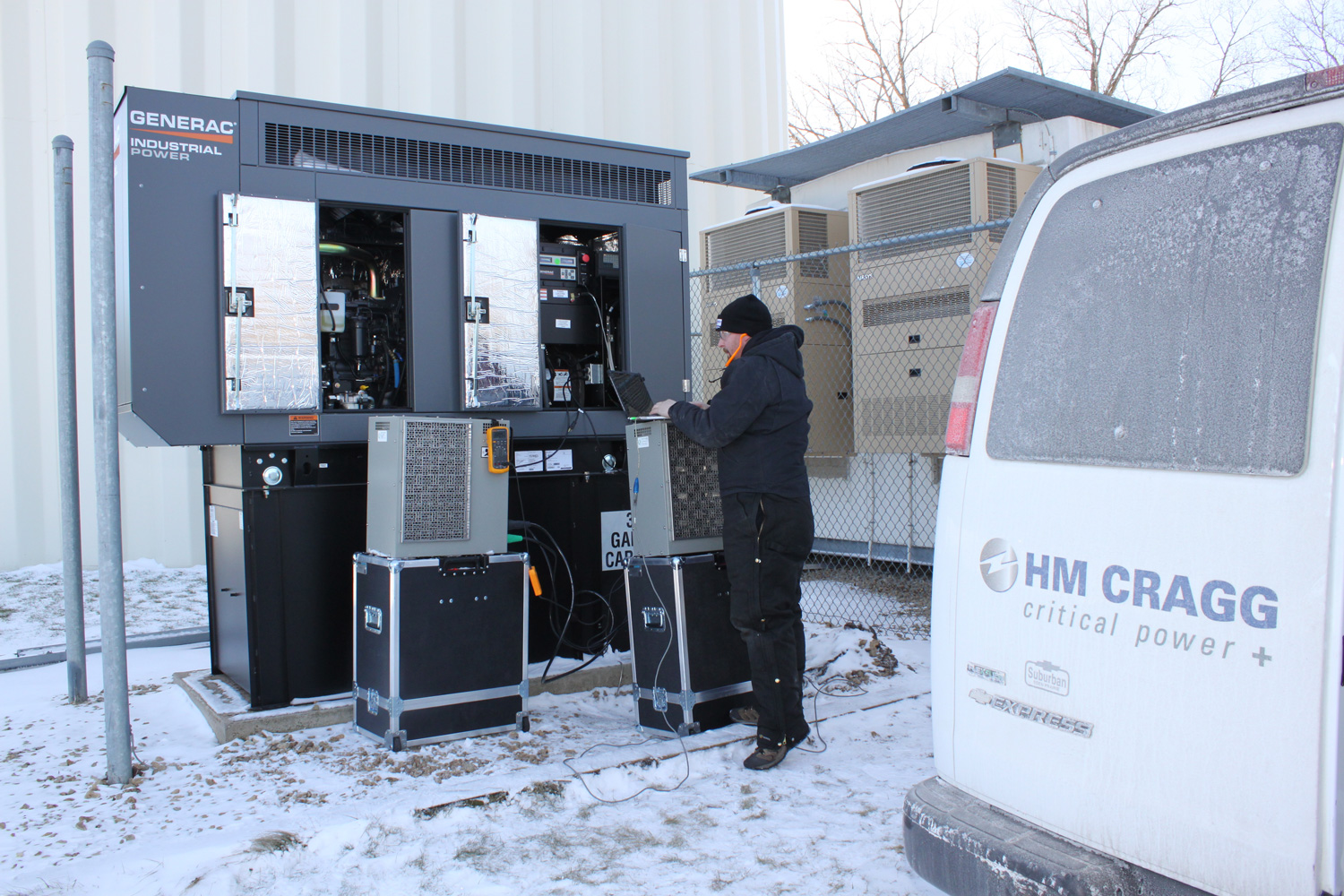
Generator Load Bank Testing is performed to ensure readiness for an emergency.
Generators are often installed to keep power on in an emergency. Almost all generators are programed to “exercise” on a periodic basis to prove they are ready to run in an emergency, and if they don’t run, to provide a chance to repair them prior to an emergency. This exercise activity typically involves running the generator for a certain amount of time under no load.
“No Load” vs Load Bank Testing
“No load” means that the building or protected equipment is still connected to the electric utility and is being powered by the utility. A successful exercise cycle only proves the engine portion of the generator is working properly. The part of the generator that actually produces electricity is the alternator. The engine turns the alternator to produce electricity. To test the alternator portion of a generator, a Load Bank Test is required.
A load bank test involves bringing to site a load bank, which is a piece of equipment that simulates the actual load. Think of a load bank as a giant toaster, it uses electricity to generate heat which is exhausted into the air. The load bank “loads” the generator and simulates it powering the building or connected equipment. By performing a load bank test, we can ensure that both the engine and the alternator portions of the generator are working properly and capable of supplying electricity if called on in an emergency.
Are Load Bank Tests Required?
Some generators are required to be load bank tested as frequently as monthly by the NFPA 110 standard. For most generators though, annual load bank testing is enough to comply with codes and standards and help ensure the generator will be ready and capable to power the actual load in an emergency.
At HM Cragg, we have various sized load banks to test any size generator, and trained technicians to perform the tests. We can provide load bank testing on a standalone basis, or as part of a scheduled maintenance program.

